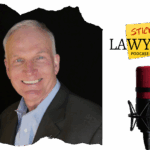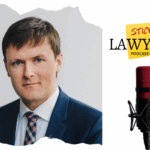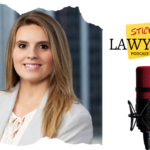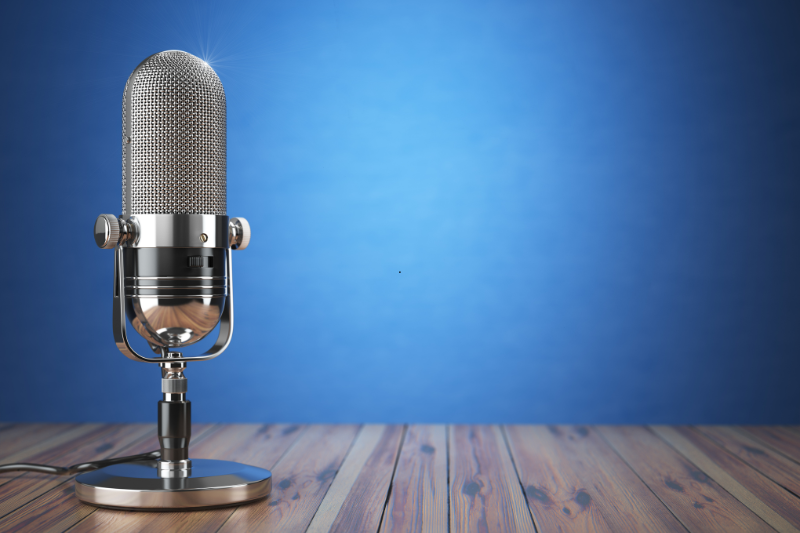Marketing
The Basics of Lawyer Podcasting: Part I
By Jonathan Spencer | 03.28.2025
In its infancy, podcasting was a daunting process. To generate a quality product, creators needed specialized equipment, expensive microphones, sound mixers, and recording software, and distribution was cumbersome.

However, just because anyone can now produce an audio or video podcast doesn’t mean everyone should.
Why Podcast?
Many lawyers see podcasting as a means to build awareness for their practices, promote thought leadership, and attract new business. With so many ways to achieve those aims, why choose podcasting over other marketing vehicles?
In addition to communicating subject matter expertise, podcasts provide an opportunity to personally introduce yourself to a potentially wide-ranging audience. Listeners get to know, trust, and like you. When someone hears or sees your podcast, you’re making a one-on-one connection, such that when they later connect with you directly, they’re meeting you for a second time.
Additionally, a podcast can show potential clients and referral sources what it’s like to work with you. How you demystify legal concepts, discuss trends, and treat your co-hosts and guests demonstrates your style and approach as well as your firm’s values and culture.
What’s the Right Podcast Format?
Podcasts generally fall into three formats: Shorter, one-voice podcasts that provide a brief overview of a topic or share hot breaking news; deeper-dive podcasts that delve into a subject; and interview-style podcasts where you and one or more guests discuss a topic as a group in either a Q&A or roundtable setup.
The short form gets the message out quickly and can help build an audience who will turn to you to get the latest insights. If you’re the only voice, you don’t have to coordinate guests’ schedules and can determine the content. But if you want to be the go-to podcaster with the latest updates, you need to be ready to record and release your podcast as quickly as possible. Even a concise, well-constructed, information-rich episode about a recent change in the law won’t have quite the impact if you’re talking about it two months later.
A longer-form podcast lets you analyze a subject more thoroughly, spending more time on the intricacies and how an issue affects your audience. Without the demands of “hot off the wire” content, you may also have more time to record and edit, or you might divide an extended recording into a series or “season.” With an inventory of episodes and advance planning, you can schedule podcast releases weeks or months into the future.
The interview-style format can be short or long and include multiple topics. Because interviews are essentially conversations, they are more engaging to your audience. Unless you’re an incredibly dynamic speaker, a long single-voice podcast can come off as a lecture. Talking with someone else makes the podcast more dynamic and engaging.
Other advantages of a multi-voice or interview podcast are efficiency and leverage. A co-host or guest could be a current or prospective client, referral source, firm colleague, business professional, co-counsel, or even opposing counsel. Tapping their knowledge frees you from being the sole expert. Plus, when a co-host or guest shares your podcast episodes with their social media followers and connections (who may, in turn, like, comment, and reshare them), you expand the reach even further and make yourself a candidate for guesting on other podcasts.
Must your podcast strictly follow one of these formats? No, feel free to combine them or go in a different direction. The challenge is identifying your audience and determining what resonates with them. Will they listen to your podcast on the treadmill or during their daily commute, or will they set aside a longer block of time? When in doubt, reach out to contacts you want in your target audience and get their thoughts about format, duration, and content.
What about audio versus video? Recording and editing audio is far easier because sound is the only medium—no need for lighting, onscreen effects, or other visual elements. But video can enhance your presence, allowing your audience to see and hear you, creating stronger chemistry and rapport. Video podcasts are arguably more shareable as you can upload episodes and shorter clips to blogs, YouTube, Instagram, TikTok, and other sites.
Where Should You Record?
When it comes to recording, sound quality is paramount. Fortunately, you have choices.
The simplest, most trouble-free route is to hire a dedicated studio with acoustic tiles, high-end equipment, and an on-site sound engineer. However, this comes at the cost of the sound engineer’s schedule, studio availability and fees, travel time, and production turnaround.
Alternatively, the DIY approach will nearly always save you money and offer greater flexibility for recording. These days, there’s no need for foam padding or noise attenuation; a good microphone and headphones and inexpensive recording software will yield studio-quality sound. The downside is that you are your own tech support. It’s up to you to ensure the audio is good and that everything works correctly.
A hybrid option would be acquiring the microphone and headphones and working with an offsite podcast engineer to manage the recording, editing, and production responsibilities. You’ll still pay a fee, but it won’t include studio rental or travel time.
What Do You Need to Record a Podcast?
If you purchase your own equipment, you usually get what you pay for, but you don’t have to break the bank. A USB microphone plugs into your computer, alleviating the need and expense of a separate mixer. Stick with a name brand (i.e., Shure) and do your research. For headphones, choose wired over wireless and over-the-ear rather than in-the-ear or earbuds. Expect to pay $100 to $400 or more for a mic, perhaps less for headphones, but you can certainly find deals, so shop around. Using a built-in computer, mobile phone, or smart device microphone is not an option.
You may want to consider a few accessories. A desk-mount microphone boom lets you bring the mic closer to your face instead of leaning into a stand. A shock mount attached to the boom isolates the mic and prevents unwanted noise from bumping, tapping, and vibration. A windscreen is a foam cover placed on top of the mic itself, and a pop filter is a mesh screen secured in front of the mic.
Depending on your podcast format (single- or multi-voice), you’ll need different recording software. If you’re the only talent on your show, you could use free software like Windows’ Sound Recorder or Apple’s GarageBand. If you’re recording yourself and one or more guests, you’ll need a multichannel platform, such as Squadcast, which captures each person’s audio track separately and locally before mixing them automatically. This differs from Zoom, Google Meet, or Teams, which record the entire session and all guests as one track without correcting any buffering or connectivity issues.
Unless you have an engineering degree, Descript is the most user-friendly yet feature-rich editing software available, and it works on both audio and video. It will transcribe your raw audio, detect and name different speakers, and automatically remove filler words, such as uh, um, you know, and like. To move and remove words, sentences, paragraphs, or whole sections, simply highlight the text on the screen before deleting, cutting and pasting, or dragging and dropping. You can easily import music files to add intros and outros, too. Studio Sound is a must-have Descript tool that eliminates background noise and room echo, as well as the need for more expensive microphones, foam tiles, and a professional studio arrangement.
Squadcast and Descript are available in packaged monthly subscriptions with pricing ranging from free to $40 based on transcription/editing hours and add-ons.
How Do You Record Your Podcast?
Before you hit the record button, you must do three things: prepare, prepare, and prepare. This is especially true if you decide on a long-form or interview-style podcast.
Whether your podcast is a two-minute update or an hour-long deep-dive, draft an outline or even a rough script, then review and edit to focus the material on your audience’s interests. Your objective is to sound natural, so avoid drafting an exhaustive script you might be tempted to recite word for word.
Finding, booking, and preparing guests can be challenging if you produce an interview-style podcast. Research candidates online or through their appearances on other podcasts and reach out to gauge their interest in your show. This step is a win-win regardless of their answer. If they say yes, you have a guest and move forward; if they’re not interested, you will have made a new contact for your networking and business development efforts.
Rather than proceed directly to recording, schedule a discovery call with your guest to introduce yourself, get familiar, and collaborate on discussion points. Your guest is your expert, so be open to their suggestions and talk about the direction you have in mind. Conduct the meeting on Squadcast or whatever recording platform you select so you can test audio levels, internet connections, and other technical elements. Another reason to delay scheduling a recording until after the discovery call is to determine if the person’s demeanor or delivery is a fit for your podcast. It is better to turn them away politely and respectfully rather than produce a lackluster episode.
Now that you have your technology set up, your outline ready, and your guest lined up, it’s finally time to record! Turn off your phone, close only the apps you need, pour yourself a large glass of cold water (no ice), and settle in. By creating a relaxed, distraction-free environment, you will be less stressed, putting yourself, your guest, and your audience at ease, too. Now you can press the record button and have fun!
This article originally appeared in the December 2024 edition of the Michigan Bar Journal and is reprinted here with permission.





